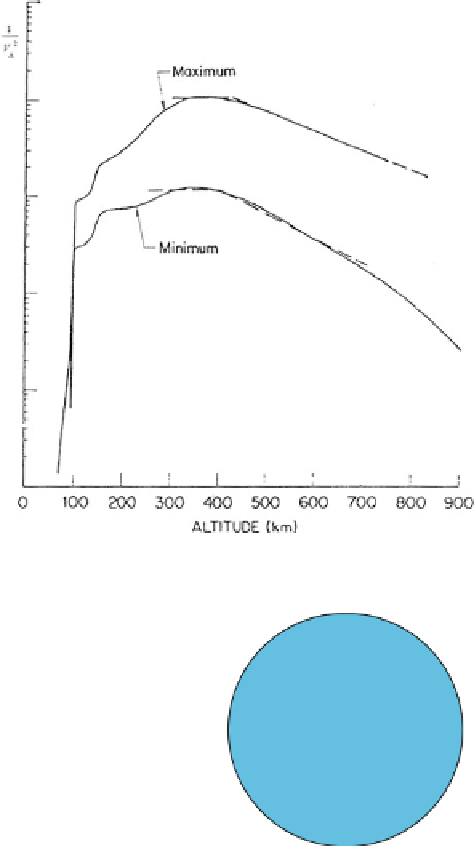Geoscience Reference
In-Depth Information
Fig. 5.2
A schematic
nighttime height profiles of
the Alfvén speed for (1)
maximum and (2) minimum
of sunspot activity. Taken
from Greifinger and
Greifinger (
1968
)
Fig. 5.3
A schematic
drawing of the ionospheric
Alfvén resonators (IAR).
(1) the ionospheric
waveguide; (2) E layer of the
ionosphere; (3) the neutral
atmosphere; (4) IAR;
(5) magnetospheric MHD
resonator; (6) resonant FMS
waves propagating in the
resonator. This simple model
also explains the mechanism
of the magnetospheric MHD
resonances
IAR
L
6
5
Earth
1
2
IAR
4
3
the ionospheric waveguide, shown with blue area 1 in Fig.
5.3
, is similar to the
that of the Earth-Ionosphere waveguide shown with area 3. In particular the global
standing FMS waves can be excited inside the resonance cavity in a close analogy
to Schumann resonances. Notice that in reality a very powerful source such as a
nuclear explosion is needed to excite the low-frequency resonant FMS modes. The
properties of the ionospheric waveguide have been extensively investigated by a
number of researchers (e.g., see Greifinger and Greifinger
1968
) in connection with
the problem of high-altitude large explosions.






























Search WWH ::

Custom Search